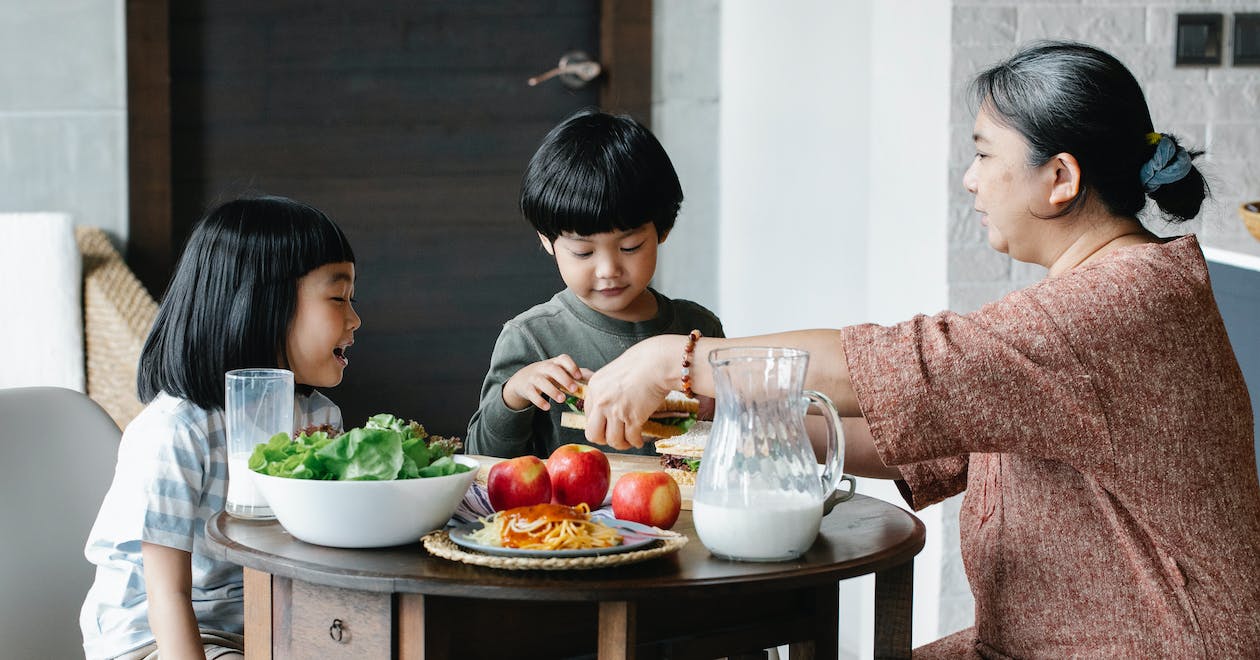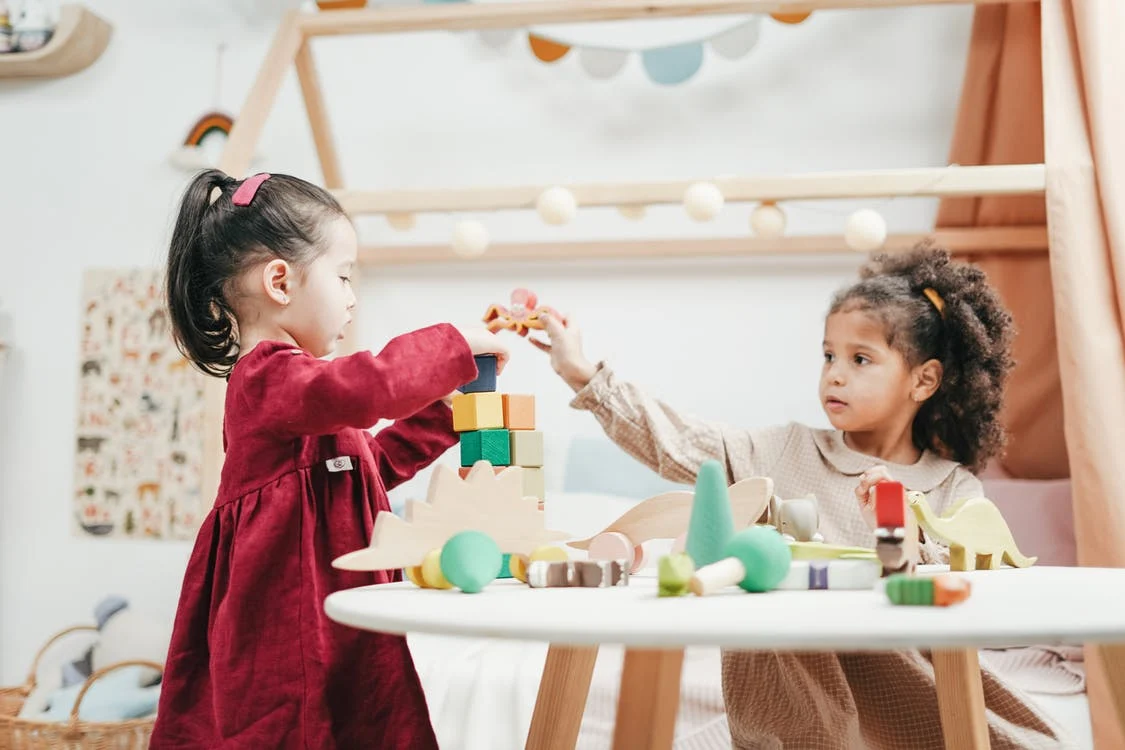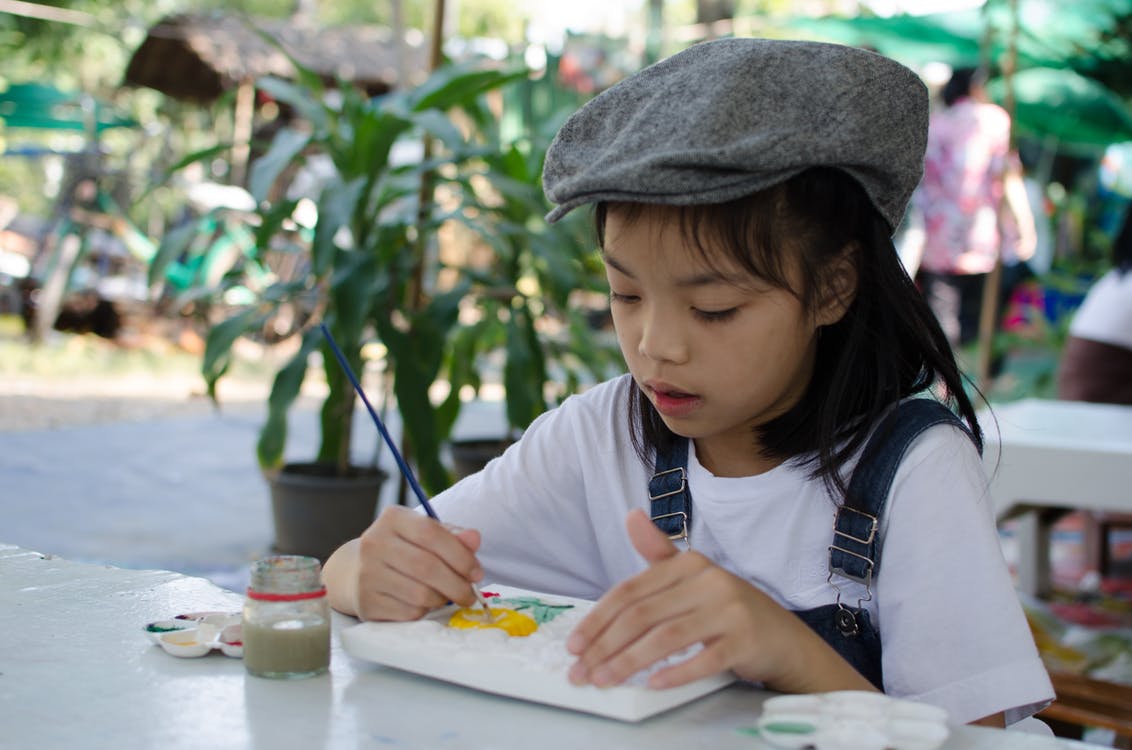How Painting Enhances Cognitive Development in Children
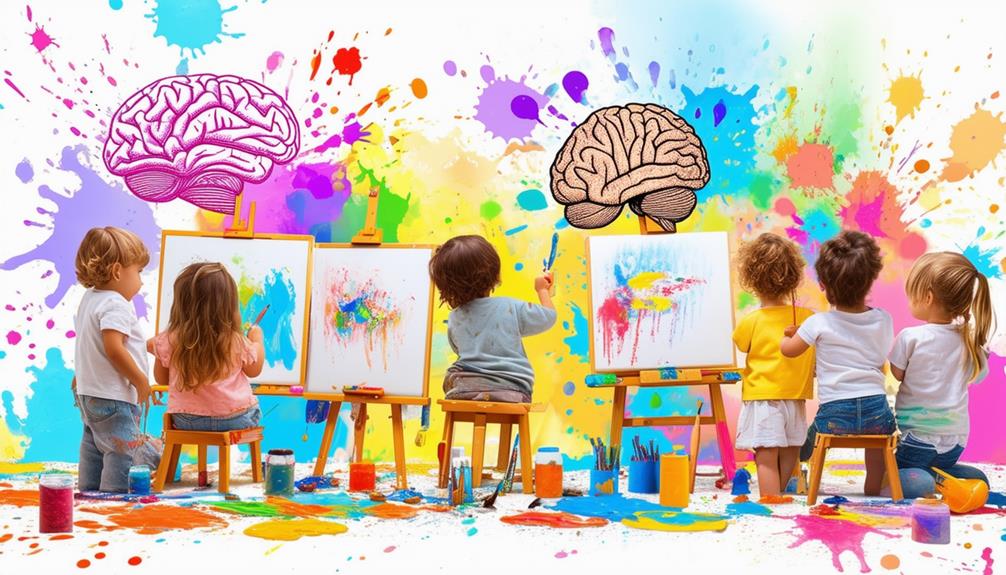
Encouraging children to paint does more than foster creativity; it significantly enhances their cognitive development. Painting activates various neural pathways, boosting brain plasticity and promoting synaptic growth. Through visual-spatial activities, children improve their visual processing and hand-eye coordination, essential for grasping complex concepts. Additionally, the creative process strengthens decision-making and problem-solving skills, building a solid foundation for lifelong cognitive growth. But how does this occur, and what specific benefits can parents and educators expect to see as children continue to engage in painting?
Historical Perspective on Art
Throughout history, civilizations like the Egyptians and Greeks have recognized the power of art in cognitive development. These ancient societies understood that engaging in artistic activities helped children express themselves and develop essential cognitive skills.
Historically, art has been more than mere decoration; it has served as a tool for fostering creativity and problem-solving. The Egyptians, for example, used detailed drawings and hieroglyphs to teach complex ideas, enhancing cognitive abilities in the process. Similarly, the Greeks integrated art into their educational systems, recognizing its role in critical thinking and neural development.
In recent decades, there has been a renewed appreciation for the impact of art education. Educators and psychologists now emphasize its importance in stimulating brain plasticity, which is vital for cognitive growth. Activities like drawing and sculpting can significantly influence the neural architecture of a child's brain, improving their ability to learn and adapt.
Brain Development Through Painting
Encouraging children to paint stimulates their neural pathways, crucial for brain development. Painting enhances visual-spatial skills and cognitive flexibility by promoting creative thinking and problem-solving. These activities help children develop essential cognitive abilities that support their overall growth.
Neural Pathway Stimulation
Painting activates diverse neural pathways in the brain, driving cognitive development in children. When kids engage in painting, they experience neural stimulation that promotes synaptic growth and brain plasticity, making their brains more adaptable and capable of new learning. The visual stimulation from colors and shapes, combined with the tactile sensation of handling brushes and paint, significantly enhances their neural architecture.
As your child paints, they're not just creating art but also boosting their cognitive development. They develop critical thinking skills by making decisions about colors, shapes, and composition. Painting requires problem-solving, such as mixing colors to achieve a desired hue or representing complex ideas visually. These activities activate different brain regions, fostering connections that support cognitive flexibility and problem-solving skills.
Engaging in painting allows children to experiment and investigate, reinforcing brain plasticity. By continually challenging their brains through artistic expression, they strengthen cognitive abilities, making them more adept at learning and thinking critically in other areas of life. Encourage your child to paint—it's a powerful tool for their cognitive growth.
Enhancing Visual-Spatial Skills
Engaging in painting activities significantly enhances children's visual-spatial skills, essential for understanding shapes, sizes, and spatial relationships. When kids paint, they not only create art but also train their brains to process visual information more effectively. This process strengthens brain plasticity, making the brain more adaptable and open to new learning experiences.
As children experiment with different colors, textures, and patterns, they sharpen their visual discrimination skills, which are crucial for tasks like reading and solving puzzles. Painting also helps improve hand-eye coordination and fine motor skills as kids coordinate their hand movements with what they see.
Additionally, painting helps children develop better spatial awareness, understanding how objects relate to one another in space. This skill is significant not only for art but also for daily activities and academic subjects like math and science. By fostering these visual-spatial skills, painting activities greatly enhance children's overall cognitive abilities, preparing them for more complex tasks and learning opportunities in the future. Thus, picking up a paintbrush does more than create a pretty picture; it builds a smarter, more capable brain.
Promoting Cognitive Flexibility
As children improve their visual-spatial skills through painting, they simultaneously enhance cognitive flexibility by engaging multiple brain regions. Mixing colors and choosing brush strokes strengthens neural connections, fostering brain development. This cognitive flexibility allows children to adapt to new situations and solve problems more effectively.
Painting activities demand decision-making and planning, which are fundamental cognitive skills. Each brush stroke and color choice requires foresight and adaptability, promoting brain plasticity. As children navigate their creative choices, they learn to manage unexpected outcomes, bolstering their problem-solving abilities.
The act of painting stimulates brain plasticity, shaping cognitive development. By constantly adjusting techniques and ideas, children become flexible thinkers. This adaptability is vital not only in artistic endeavors but also in everyday life, helping them handle diverse challenges, from academic tasks to social interactions.
Encouraging children to paint isn't just about fostering creativity; it's a powerful tool for boosting cognitive flexibility. This process strengthens neural connections, aiding overall cognitive development. When children pick up a paintbrush, they are not just creating art—they are building a more adaptable and resilient brain.
Socio-Emotional Benefits

When your child paints, they are not just creating art; they are also expressing and regulating their emotions. This activity helps build social skills as children engage in collaborative projects and learn to empathize with others. Through painting, your child can grow emotionally and socially, gaining valuable skills for life.
Emotional Expression Outlet
Painting offers children a unique, non-verbal way to express their emotions and complex feelings creatively. Through artistic activities like painting, children can explore and communicate emotions that might be challenging to articulate with words. This form of emotional expression aids in developing their emotional intelligence, making them more aware of their own feelings and those of others.
Here's how painting can benefit your child's socio-emotional growth:
- Emotional Release: Painting provides a safe space for children to process and release emotions, promoting better mental well-being.
- Creative Thinking: Engaging in painting encourages creative thinking, allowing children to find inventive ways to express their emotions.
- Empathy and Understanding: By interpreting and creating art, children can cultivate empathy and the ability to understand others' emotions.
- Enhanced Social Interaction: As children share their artwork and discuss their feelings, they improve their social interaction skills and emotional intelligence.
Building Social Skills
In addition to serving as an emotional outlet, engaging in painting significantly enhances children's social skills by fostering collaboration and communication during group activities. When children participate in group art projects, they learn the importance of teamwork and the value of working towards a common goal. This collaboration encourages interaction, helping them build positive relationships with their peers.
Through painting, children communicate their emotions and thoughts, which boosts their ability to express themselves both verbally and non-verbally. This form of artistic expression fosters empathy as they begin to understand and respect the diverse emotional experiences of others. Consequently, their emotional intelligence increases, enabling them to navigate social situations more effectively.
Group painting sessions also provide a platform for kids to share and discuss their creations, promoting social growth by teaching them to appreciate different perspectives and artistic styles. These experiences help children develop crucial communication skills, as they articulate their ideas and listen to others.
Physical Development in Art
Participating in various art activities significantly enhances children's physical development by refining both fine and gross motor skills. Activities such as painting improve hand-eye coordination and manual dexterity as children manipulate brushes and tools, requiring precise movements. Working on larger canvases or murals further develops gross motor skills, involving whole-body movement.
Consider these benefits of art on physical development:
- Improved Fine Motor Skills: Clay hand-building and detailed painting enhance hand-eye coordination and manual dexterity.
- Enhanced Gross Motor Skills: Large mural projects and dance activities promote overall physical growth and coordination.
- Better Movement Skills: Diverse painting techniques help refine children's movement skills.
- Creative Expression: Dance in art classes allows children to express themselves creatively while developing gross motor skills.
Engaging in art activities provides a multifaceted approach to physical development, fostering both precision and broad movements essential for growth.
Stimulating Creativity and Imagination
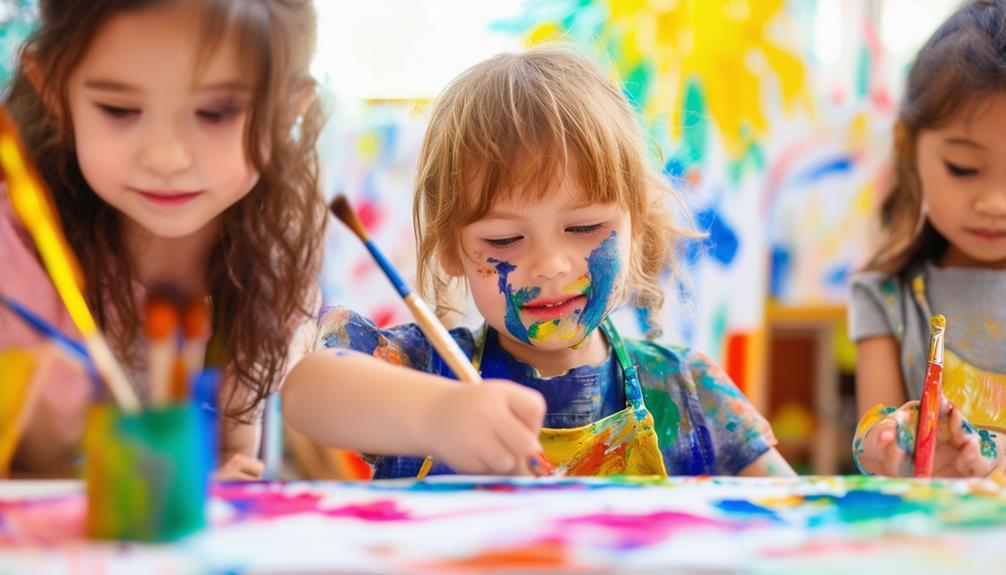
Children often unlock boundless creativity and imagination by expressing their ideas, emotions, and experiences through vibrant colors and bold shapes. When kids immerse themselves in painting, they engage their minds in a manner that is both enjoyable and educational. This activity stimulates their imagination, prompting them to think innovatively and develop unique artistic expressions.
By selecting different colors and shapes, children practice critical thinking. They make decisions about which hues to use and techniques to apply, fostering autonomy and creative problem-solving. For instance, choosing whether to use a brush or a sponge to create a specific texture can serve as an exercise in critical thinking.
Moreover, painting is not merely about applying colors to a canvas; it is an exploratory journey. Kids experiment with various painting methods and approaches, stimulating cognitive development. They learn to evaluate their choices and understand the effects of combining different elements, thereby enhancing their decision-making skills.
Through painting, children not only create visually pleasing artwork but also develop a deeper understanding of how to bring their artistic visions to life. This process nurtures their ability to think creatively and critically, laying a foundation for lifelong cognitive growth.
Cognitive Skills Enhancement
As children engage in painting, they ignite creativity and significantly enhance their cognitive skills. This artistic activity serves as a powerful tool for cognitive development, helping kids build essential abilities. Here's how painting can boost your child's mental capabilities:
- Problem-Solving and Critical Thinking: When children decide how to bring their ideas to life on canvas, they engage in problem-solving and critical thinking. They learn to tackle artistic challenges, fostering these crucial cognitive skills.
- Decision-Making and Planning: Selecting colors and mixing paints requires decision-making and planning. These tasks encourage children to think ahead and make thoughtful choices, sharpening their planning and analytical abilities.
- Executive Functions: Tasks like mixing colors and following a sequence of steps in painting help children develop their executive functions. This enhances their ability to organize, focus, and manage multiple aspects of a task simultaneously.
- Cognitive Development: Painting acts as a cognitive workout, stimulating various areas of the brain and promoting overall cognitive growth. Engaging with colors and shapes deepens children's understanding of the world, enriching their cognitive landscape.
Role of Parents and Educators

Parents and educators are instrumental in fostering cognitive development through painting by supplying the necessary tools and encouragement for creative exploration. Supporting children's artistic expression during early childhood is essential for holistic development. By offering a variety of art materials, children can explore different textures, colors, and techniques, promoting cognitive growth.
Parental involvement enhances this process; encouraging children to describe their artwork enriches their language skills and cognitive processing. This interaction also aids in developing problem-solving skills, as children make decisions about color choices and composition. Educators can integrate painting into the curriculum, guiding children through structured yet adaptable artistic activities.
Engaging in painting tasks strengthens cognitive abilities such as planning, decision-making, and visual-spatial reasoning. As children decide how to represent their ideas on paper, they practice fundamental cognitive skills essential for their overall development. By fostering an environment that values artistic expression, parents and educators significantly contribute to children's cognitive growth, laying a strong foundation for their future learning experiences.
Incorporating Art in Learning Environments
How can integrating art into learning environments reveal your child's full cognitive potential? By incorporating art into early education, you can create a rich, engaging environment that significantly enhances cognitive development. Artistic exploration in classrooms isn't just about creating beautiful pieces; it's about fostering critical thinking, creativity, and problem-solving skills. Here's how you can make a difference:
- Provide Diverse Art Materials: Offering a variety of art supplies encourages children to experiment and express themselves creatively, thereby enriching their cognitive abilities.
- Encourage Interdisciplinary Learning: Integrating art with subjects like math, science, and language arts allows children to see connections between different areas of knowledge, promoting holistic cognitive growth.
- Facilitate Visual, Hands-On Activities: Activities such as painting, drawing, and sculpting stimulate memory retention and improve attention spans, positively impacting academic performance.
- Ensure Inclusivity in Learning: Make art activities accessible to all children, creating an inclusive space where every child can explore and develop their unique talents.

